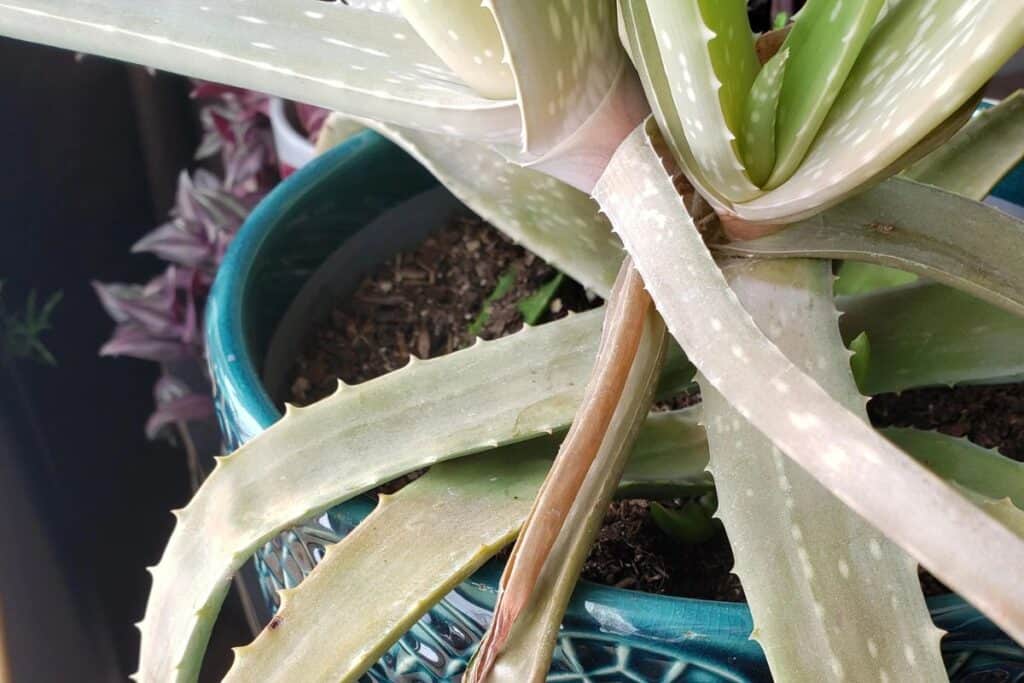If your aloe vera’s leaves look deflated, wrinkled, or less plump than usual, your plant is sending a clear signal that something’s off in its care routine. While aloe plants are known for being hardy and forgiving, shriveled leaves are a warning sign that shouldn’t be ignored. The issue could stem from watering mistakes—either too much or too little—poor lighting conditions, temperature stress, or even hidden pest infestations. Recognizing these symptoms early not only helps you rescue your current plant but also builds your confidence in aloe care, leading to a thriving, visually appealing indoor garden that’s both low-maintenance and rewarding.

Contents
Common Reasons Aloe Leaves Shrivel
Shriveled aloe leaves usually mean something’s off in your care routine.
The most common cause is watering—either too much or too little:
- Overwatering can lead to root rot.
- Underwatering causes thin, dry leaves.
Other causes include:
- Not enough light (less than 6 hours of bright, indirect sunlight)
- Temperature swings below 50°F or above 85°F
- Lack of nutrients
- Pests like spider mites or mealybugs
All of these can make your aloe’s leaves wrinkle and lose their plump look.
How to Spot Water Stress

Water stress shows up in different ways depending on whether you’re giving too much or too little.
Overwatering signs:
- Leaves feel soft and mushy
- Yellowish color
- Base feels soggy or spongy
Underwatering signs:
- Leaves feel thin and papery
- Edges curl inward
- Leaves turn gray or brown
- They look deflated and limp when squeezed
These symptoms usually show up slowly over 2–3 weeks.
Light and Temperature Effects on Aloe Leaves
Aloe vera plants come from desert areas, so they need the right light and temperature to stay healthy.
Too much direct sunlight can turn leaves pale yellow or brown. Not enough light makes them thin and floppy.
For best results:
- Place your aloe near a south or west-facing window
- Give it bright, indirect light
- Keep temperatures between 55–80°F (13–27°C)
- Avoid cold drafts or windows below 50°F (10°C), which can cause mushy or damaged leaves
Soil and Drainage Issues That Cause Shriveling
Aloe plants can handle different soils, but poor drainage is a big problem.
If you use heavy soil like clay or mixes that hold too much water, the roots can’t breathe. That leads to shriveled, discolored leaves.
Use a well-draining mix:
- 50% cactus soil
- 50% perlite or sand
To check drainage:
- Stick your finger 2 inches into the soil
- If it’s still wet 5–7 days after watering, it’s time to repot
Make sure your pot has drainage holes at least ½ inch wide to prevent root rot.
Pests and Diseases That Damage Aloe Leaves
Even healthy aloe plants can get pests or diseases that cause shriveling.
Common pests:
- Mealybugs and scale insects
- They leave cotton-like spots and brown marks
- They suck sap from the leaves
Common diseases:
- Fungal infections like root rot and leaf spot
- These start as small brown or black spots
- They spread quickly and make leaves mushy
To catch problems early:
- Check under leaves weekly
- Look for sticky residue or tiny bugs
To prevent disease:
- Don’t overwater
- Keep 2–3 inches of space between plants for airflow
How to Help Your Aloe Recover
If your aloe shows damage, act fast to help it bounce back.
Here’s what to do:
- Cut off damaged leaves with sterilized shears at a 45-degree angle near the base
- Change your watering schedule—let the soil dry completely between waterings
- Move your plant to a spot with 6–8 hours of bright, indirect sunlight
- If leaves are soft, don’t water for 2 weeks
Also:
- Check the pot’s drainage and repot if needed using succulent mix
- Use a balanced, water-soluble succulent fertilizer at ¼ strength every 6–8 weeks during growing season
